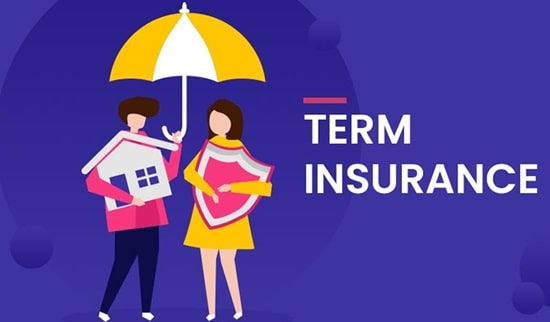When it comes to safeguarding your child’s health and future, having the right insurance coverage is critical. Most parents rely on health insurance plans to protect their children from the financial strain of medical emergencies, routine checkups, and hospital visits. However, what many don’t realize is that even the most comprehensive health insurance plans can sometimes fall short, leaving gaps in coverage that could lead to significant out-of-pocket expenses. This is where child insurance plans can come to the rescue.
In this blog, we will explore how child insurance plans can act as a crucial backup for gaps in health insurance and why it’s essential to consider these plans as part of your overall financial strategy.

1. Understanding the Limitations of Health Insurance Plans
While health insurance plans are designed to cover most medical expenses, including doctor visits, hospital stays, surgeries, and prescription drugs, they may not be as all-encompassing as we think. Many policies have exclusions, waiting periods, and limited coverage for certain conditions or treatments. Here are some common gaps in health insurance coverage:
A. Coverage Limits
Some health insurance plans come with caps on certain treatments or services. For instance, your child’s health plan might limit coverage for specific medical procedures, leading to out-of-pocket costs if your child requires expensive treatment.
B. Exclusions for Pre-Existing Conditions
Certain health insurance plans might exclude or limit coverage for pre-existing conditions. This could mean that if your child is diagnosed with a chronic illness or disability early in life, you may have to bear a significant portion of the medical costs yourself.
C. Critical Illness and Disability
Traditional health insurance plans often don’t cover expenses related to long-term critical illnesses, disabilities, or rehabilitation costs. This means that while your health insurance may cover immediate medical treatment, long-term care, and associated costs like special equipment, therapies, and home modifications may not be included.
D. Rising Healthcare Costs
Healthcare costs are continually rising, and many health insurance plans do not fully cover inflation in medical expenses. This can leave families struggling to afford uncovered expenses like co-pays, deductibles, and non-network medical services.
2. How Child Insurance Plans Can Bridge the Gap
A child insurance plan is a specialized financial product that provides a dual benefit—offering life insurance coverage for your child’s future while also serving as an investment vehicle. The plan grows over time, with payouts structured to meet specific needs like education or medical expenses. In addition, many child insurance plans have features that can address gaps in health insurance coverage.
Here’s how child insurance plans can fill the void left by limited or inadequate health coverage:
A. Critical Illness Coverage
Many child insurance plans offer critical illness riders, which provide a lump-sum payout if your child is diagnosed with a severe illness like cancer, heart disease, or organ failure. This money can be used for any purpose, including medical treatments not covered by health insurance, such as alternative therapies or out-of-network specialists.
For example, if your health insurance plan covers only a portion of your child’s cancer treatment, the payout from the child insurance policy can cover the remaining costs, providing financial relief at a time when it’s most needed.
B. Disability Benefits
Some child insurance plans include disability coverage, which ensures that your child is financially secure if they are diagnosed with a permanent disability. These plans typically provide regular payouts or lump-sum payments that can help cover rehabilitation, special education, or modifications to your home to accommodate your child’s needs. This is a crucial area where traditional health insurance plans often fall short.
C. Savings for Future Healthcare Needs
Most child insurance plans are designed as long-term investment products that grow over time. These plans can be structured to offer payouts at crucial stages of your child’s life, such as when they’re entering college or starting their career. The savings accumulated through these plans can also serve as a financial backup to cover healthcare costs that may arise during these transitions—expenses that health insurance may not cover, such as dental procedures, vision care, or mental health services.
D. Additional Riders for Comprehensive Coverage
Many child insurance plans offer additional riders such as hospitalization benefits, accidental injury coverage, or waiver of premium benefits. These riders ensure that even if your health insurance plan doesn’t cover certain medical emergencies or extended hospital stays, your child insurance policy will help cushion the financial impact.
3. Leveraging Child Insurance for Long-Term Security
While health insurance plans are designed to manage immediate healthcare expenses, child insurance plans provide a long-term financial cushion for your child’s future. This dual approach ensures that you are covered for both medical emergencies and significant life events, such as education or starting a business.
Here’s how you can use a child insurance plan for broader financial security:
A. Educational Expenses
If your child’s medical condition or special needs require additional educational resources, a child insurance plan can provide the financial support necessary. For example, if your child needs special education due to a developmental disorder, the payouts from a child insurance policy can be used to cover the costs that are not typically covered by standard health insurance.
B. Supplemental Healthcare Needs
As your child grows, their healthcare needs may evolve. While health insurance plans focus on immediate healthcare needs, a child insurance plan can offer supplemental funds to cover additional healthcare services, including long-term treatments, dental care, or therapies that may not be covered by traditional health policies.
C. Emergency Fund for Uncovered Expenses
Building cash value through a child insurance plan can create an emergency fund for any uncovered health-related expenses. This gives you peace of mind knowing that you have financial resources available in case your health insurance doesn’t cover all the costs of an unexpected medical situation.
Closure!
In today’s world of rising medical costs and increasingly complex healthcare needs, relying solely on health insurance plans might not be enough. Gaps in coverage—whether it’s for critical illnesses, long-term care, or uncovered medical expenses—can put a strain on your finances and limit the quality of care your child receives.
A child insurance plan offers a valuable backup by providing financial support where health insurance falls short. With its combination of investment growth and insurance coverage, a child insurance plan ensures that your child’s future—both health-related and financial—remains secure. By integrating both health and child insurance into your overall financial strategy, you can protect your child from the uncertainties of life and guarantee their well-being for years to come.

